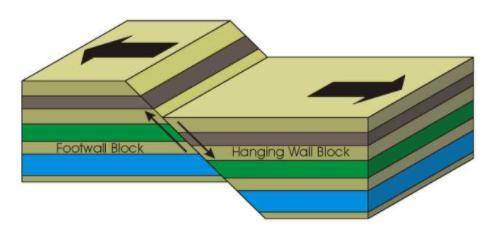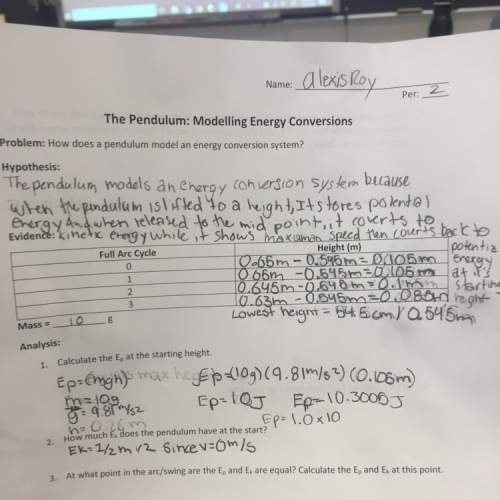
Physics, 09.12.2020 08:40, enrique2211
Which type of fault is shown by the illustration below where the hanging wall moves down relative to the foot wall?
A. normal fault
B. reverse fault
C. strike slip fault
D. thrust fault


Answers: 2
Other questions on the subject: Physics

Physics, 21.06.2019 22:30, ayoismeisjjjjuan
An engineer designs a roller coaster so that a car travels horizontally for 162 ft, then climbs 127 ft at an angle of 31.0° above the horizontal. it then moves 127 ft at an angle of 46.0° below the horizontal. if we take the initial horizontal motion of the car to be along the +x-axis, what is the car's displacement? (give the magnitude of your answer, in ft, to at least four significant figures and give the direction of your answer in degrees counterclockwise from the +x-axis.)
Answers: 1

Physics, 22.06.2019 05:00, DASASDAEDWEDA
Wavelength, frequency, and energy are related. what happens to a wave as it’s wavelength gets shorter?
Answers: 2

Physics, 22.06.2019 15:30, Mhayslett12
To understand the electric potential and electric field of a point charge in three dimensions consider a positive point charge q, located at the origin of three-dimensional space. throughout this problem, use k in place of 14? ? 0. part adue to symmetry, the electric field of a point charge at the origin must point from the origin. answer in one word. part bfind e(r), the magnitude of the electric field at distance r from the point charge q. express your answer in terms of r, k, and q. part cfind v(r), the electric potential at distance rfrom the point charge q. express your answer in terms of r, k, and q part dwhich of the following is the correct relationship between the magnitude of a radial electric field and its associated electric potential ? more than one answer may be correct for the particular case of a point charge at the origin, but you should choose the correct general relationship. a)e(r)=dv(r)drb)e(r)=v(r)rc)e(r)=? dv(r)drd)e(r)=? v(r)r
Answers: 2

Physics, 22.06.2019 16:00, blythephillips2734
An charge with mass m and charge q is emitted from the origin, (x, y)=(0,0). a large, flat screen is located at x=l. there is a target on the screen at y position y(h), where y(h) > 0. in this problem, you will examine two different ways that the charge might hit the target. ignore gravity in this problem. 1.assume that the charge is emitted with velocity v(0) in the positive x direction. between the origin and the screen, the charge travels through a constant electric field pointing in the positive y direction. what should the magnitude e of the electric field be if the charge is to hit the target on the screen? express your answer in terms of m, q, y(h), v(0), and l. 2.now assume that the charge is emitted with velocity v(0) in the positive y direction. between the origin and the screen, the charge travels through a constant electric field pointing in the positive x direction. what should the magnitude e of the electric field be if the charge is to hit the target on the screen? express your answer in terms of m, q, y(h), v(0), and l.
Answers: 1
Do you know the correct answer?
Which type of fault is shown by the illustration below where the hanging wall moves down relative to...
Questions in other subjects:






Mathematics, 21.06.2019 20:20


Mathematics, 21.06.2019 20:20









